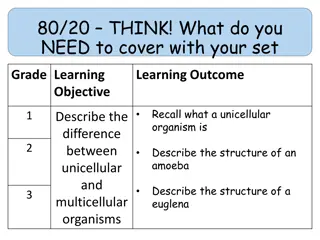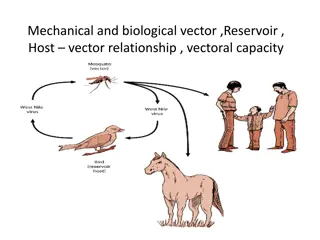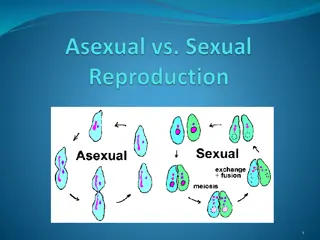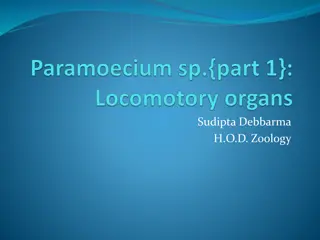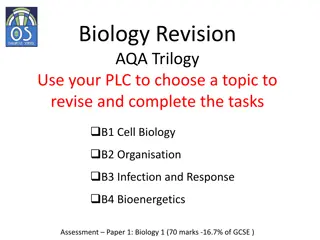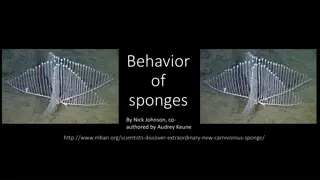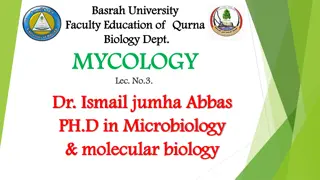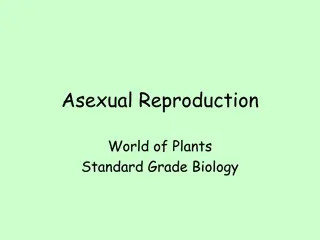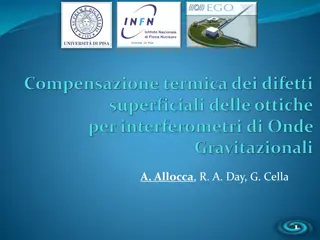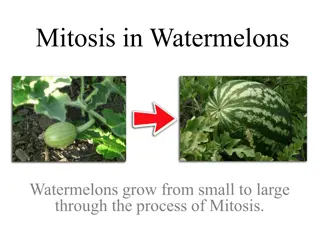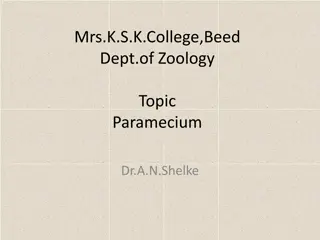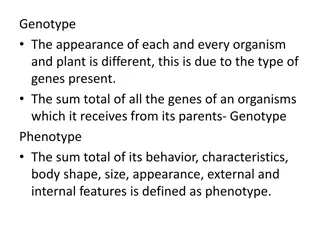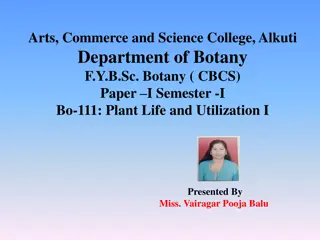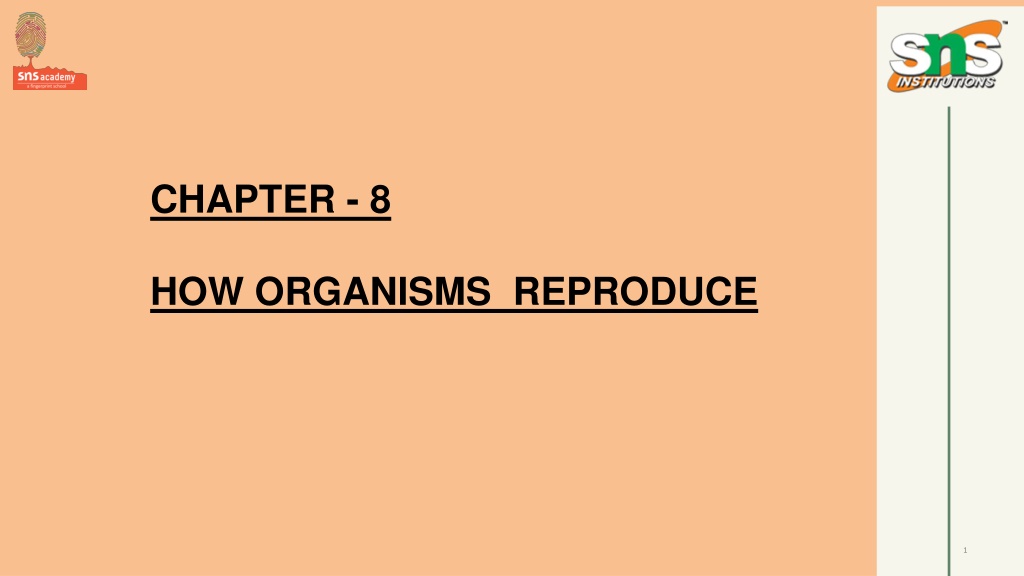
Understanding Organisms Reproduction Process
Learn about the importance of reproduction in maintaining species, how DNA plays a role in creating variations, the significance of variations for survival in changing environments, and the types of reproduction methods in organisms such as asexual and sexual reproduction.
Download Presentation

Please find below an Image/Link to download the presentation.
The content on the website is provided AS IS for your information and personal use only. It may not be sold, licensed, or shared on other websites without obtaining consent from the author. If you encounter any issues during the download, it is possible that the publisher has removed the file from their server.
You are allowed to download the files provided on this website for personal or commercial use, subject to the condition that they are used lawfully. All files are the property of their respective owners.
The content on the website is provided AS IS for your information and personal use only. It may not be sold, licensed, or shared on other websites without obtaining consent from the author.
E N D
Presentation Transcript
CHAPTER - 8 HOW ORGANISMS REPRODUCE 1
1) Reproduction :- Reproduction is the process by which living organisms produce new individuals of the same species. Reproduction is necessary for the survival and increase in the population of a species. If organisms do not reproduce, their population decreases and species will become extinct. 2) Do organisms create carbon copies of themselves ? The DNA (Deoxyribo nucleic acid) molecules in the chromosomes in the nucleus is responsible for the transfer of characters from the parents to the off springs. During reproduction the reproductive cells produce two copies of the DNA which separate into two cells. The DNA copies will be similar but not identical to each other. So the new individuals have slight variations from their parents. This is the basis for variations and evolution of new species. 2/10
3) The importance of variation :- DNA copying during reproduction is important for maintaining the body designs of different organisms to survive in the existing environment. But the environment is constantly changing due to changes in temperature, climate, water levels etc. If organisms cannot adjust themselves to the changes in the environment then their species will become extinct. If there are variations in some individuals of a species they may be able to survive the changes in the environment. So variations in species is necessary for the survival of different species and for the evolution of new species. 3/10
4) Types of reproduction :- There are two main types of reproduction in living organisms. They are asexual reproduction and sexual reproduction. Asexual reproduction :- is reproduction in which new individuals are produced from a single parent. Sexual reproduction :- is reproduction in which two individuals are involved to produce a new individual. Asexual reproduction is of different types. They are:- fission, budding, regeneration, fragmentation, spore formation, vegetative propagation etc. 4/10
i) Fission :- Fission is an asexual reproduction by which a unicellular organism divides and forms two or more new individuals. Fission is of two types. They are binary fission and multiple fission. i) Binary fission :- In this method an organism divides and forms two individuals. First the nucleus divides and forms two nuclei. Then the cytoplasm divides and forms two daughter cells. Eg:- Amoeba, Paramaecium etc. ii) Multiple fission :- In this method one organism divides into many daughter cells. Eg.Plasmodium (Malarial parasite). 5/10
ii) Budding :- In this method a bud like projection is formed on the body of the organism. The bud then develops into a new individual. It then separates from the parent and forms an independent individual. Eg:- Hydra, Yeast etc. 6/10
iii) Regeneration :- In this method a part of the body if the organism if cut or broken can develop into a new individual. Eg :- Hydra, Planaria, Star fish etc. 7/10
iv) Fragmentation :- In this method the body of a simple multicellular organism breaks up into smaller pieces on maturation and each fragment develops into new individuals. Eg :- Spirogyra. 8/10
v) Spore formation :- In this method structures called sporangia produce tiny cells called spores. When the spores come in contact with a moist surface, it develops into new individuals. Eg :- Rhizopus , Mucor, Penicillium etc. 9/10
vi) Vegetative propagation :- In this method new plants are produced from the vegetative parts of the plant like root, stem or leaf. Eg:- from roots dhalia, sweet potato, from stem potato, ginger, from leaf bryophyllum, begonia. Plants produced by vegetative propagation produce flowers and fruits earlier than those produced from seeds. It also helps in the propagation of plants which do not produce seeds like rose, jasmine banana etc. Vegetative propagation can also be done artificially by cutting, layering, grafting etc. 10/10
5) Sexual reproduction in flowering plants :- a) Reproductive parts of a flower :- The stamen and pistil are the reproductive parts of the flower. Stamen is the male reproductive part. It produces pollen grains in the anther which contains the male germ cell (male gamete). Pistil is the female reproductive part. It produces ovules in the ovary which contain the female germ cell (female gamete). 11
b) Pollination :- The transfer of pollen grains from the anther to the stigma of a flower is called pollination. It takes place by wind, water or insects. The transfer of the pollen grain from the anther of a flower to the stigma of the same flower in the same plant or to the different plant which is genetically similar is called self pollination. Cross pollination is a natural method in which transfer of pollen takes place from an anther of a flower of one plant to a stigma of a flower of another plant of the same species. Pollination takes place by insects, wind, water etc. so they are called as pollinators. 12
Geitonogamy: This is a type of self- pollination that happens when pollen grains from the anther of one flower transfers to the other flower but in the same plant. Xenogamy: This process is a cross- pollination process where the pollen of one flower gets transferred to another flower but in two different plants. 13
c) Fertilization :- After the pollen grain is transferred to the stigma it produces a pollen tube which passes through the style and enters the ovary and ovule. In the ovule the male germ cell (male gamete) fuses with the female germ cell (female gamete) to form a zygote. This process is called fertilization. After fertilization the zygote divides several times and forms the embryo which then develops into the seed and the ovary develops into the fruit. 14
THANK YOU 15

